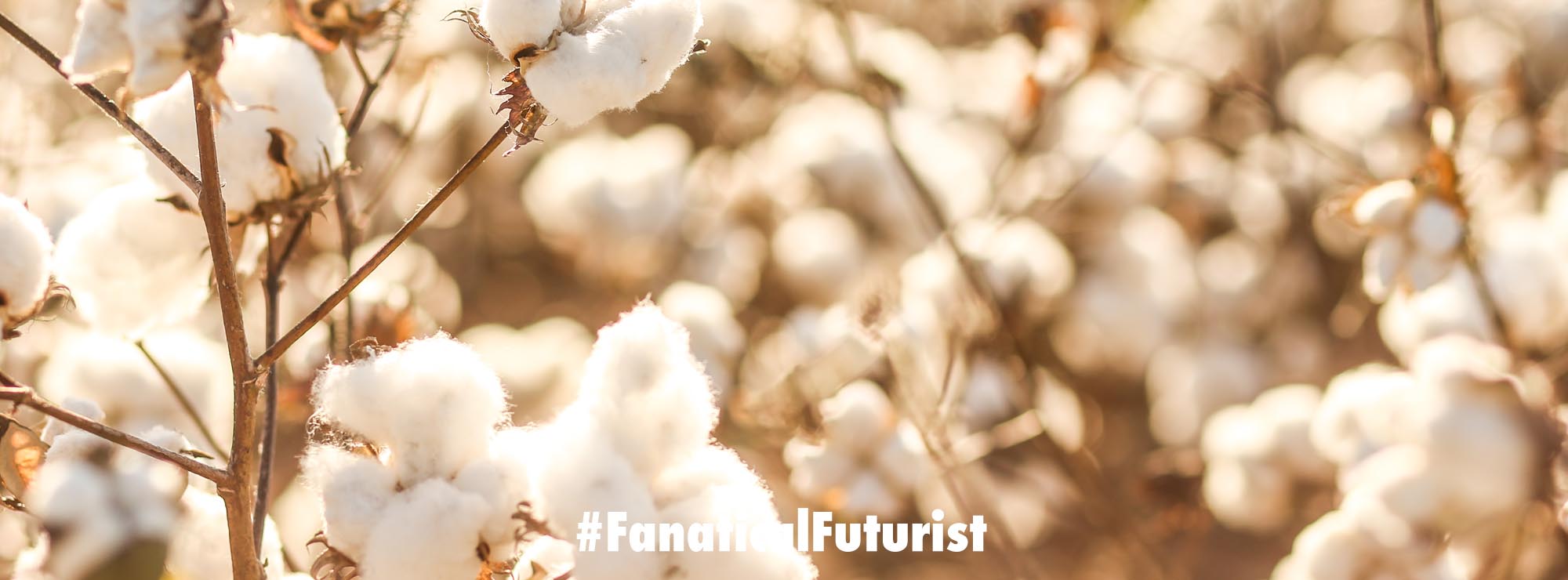
WHY THIS MATTERS IN BRIEF
It’s very difficult to trace the origin of fibres and other materials, but now DNA tags can tell you exactly where something comes from fast.
 Love the Exponential Future? Join our XPotential Community, future proof yourself with courses from XPotential University, read about exponential tech and trends, connect, watch a keynote, or browse my blog.
Love the Exponential Future? Join our XPotential Community, future proof yourself with courses from XPotential University, read about exponential tech and trends, connect, watch a keynote, or browse my blog.
Sustainability has become a major talking point in the clothing and denim world as brands and retailers alike shout about their efforts to be more sustainable, which includes everything from cotton cultivation, and replacing cotton with algal based substitutes, to worker welfare. But without true visibility into the entire supply chain many of them inevitably fall short of being able to back up these bold PR claims.
Denim production in particular has historically required heavy water, chemical, and energy use, making the industry a target of sustainability scrutiny. The anatomy of a jean includes numerous components, from the fabric to trims such as thread, zippers, buttons and rivets. And each of these elements comes with its own potential “reputational risks.”
At the textile level, the cotton that denim heavily relies on has recently come under the microscope following reports of forced labor in locations such as China’s Xinjiang Uyghur Autonomous Region. This has heightened the argument for being able to trace cotton back to the field level. The production of denim fabric also uses chemicals and dyes, which can be harmful to workers and the local community if they enter the water – although there are new eco friendly bacterial based dyes that are now coming onto the market. Companies also need to verify the origins of their trims to prove that the metals used in zippers or buttons are not conflict minerals – all of which is hard work.
“Without knowing the source of the materials and chemicals used, and without authenticating the product itself at each step in the supply chain, it is impossible to provide proof that you can meet your sustainability goals and plans,” said Wayne Buchen, vice president of strategic sales at Applied DNA Sciences. “Traceability can provide a tool to drive denim sustainability, enabling brands to meet their goals and substantiate their claims.”
To fill this need for knowledge at each link of the supply chain, companies can invest in physical traceability. Applied DNA Sciences’ CertainT platform tags, tests and tracks raw materials such as cotton and lyocell through each stage of production – from spinning to dyeing, weaving and cut-and-sew assembly. Materials are tagged with a unique molecular DNA tag and products can later be forensically tested using a portable device at the yarn, greige, or finished product level to verify their legitimacy.
This supply chain traceability can also happen before goods are even shipped, ensuring that what reaches retail or the end consumer is pre-verified, and for brands, having this added traceability is a valuable advantage when it comes to the war for the customers hard earned cash.
“You can share the journey of your product with the consumer. This journey touches the lives of many people: those who grow the fiber and produce the yarn, fabrics, trims and zipper,” said MeiLin Wan, vice president, textile sales at Applied DNA Sciences. “While the end product is the physical and tangible result of the journey, it is the intangible values that are also important to tell the story of why, who, what, where and when my product was made.”
While environmental issues like water use are a concern, so too is the human cost of denim production. Knowing just the tier 1 supplier or cut-and-sew manufacturer is not enough anymore, especially as Customs and Border Protection now requires confirmation that cotton imports didn’t originate in Xinjiang. Traceability also proves that production was not outsourced to non-compliant facilities. Otherwise, potential problems could include forced labor, child labor, hazardous chemical use and harmful processes like sandblasting.
“Operations have been challenged to get ahead of the curve on social compliance, knowing the tier 1, tier 2, tier 3, tier 4, etc. supply chain,” said Wan. “The traceability aspect has now put a great sense of urgency to have this in place now, not down the road.”
Traceability also comes into play after the consumer’s purchase. Certainty about what components are in a pair of jeans allows the garment to be recycled more easily and effectively. As circularity enters the mainstream, there is potential for suppliers to try to pass virgin materials off as recycled inputs. Combatting this, traceability validates that recycled materials are genuine.
Having more visibility and tracking of components – including fibers, dye and trims – can assist upstream partners in proving provenance and quality. But while multiple players are involved in producing denim products, in the end the onus is on the brands to push for better transparency. Labels can nominate suppliers and then prompt them to avoid chemicals on the restricted substance list and adhere to their corporate social responsibility guidelines.
The risk for brands is also greater, Buchen said, “Importers of denim are responsible for the claims they make on their products, and brands are held to a higher standard legally,” he said. “Brands are also expected to be more transparent about how their products are made today.”